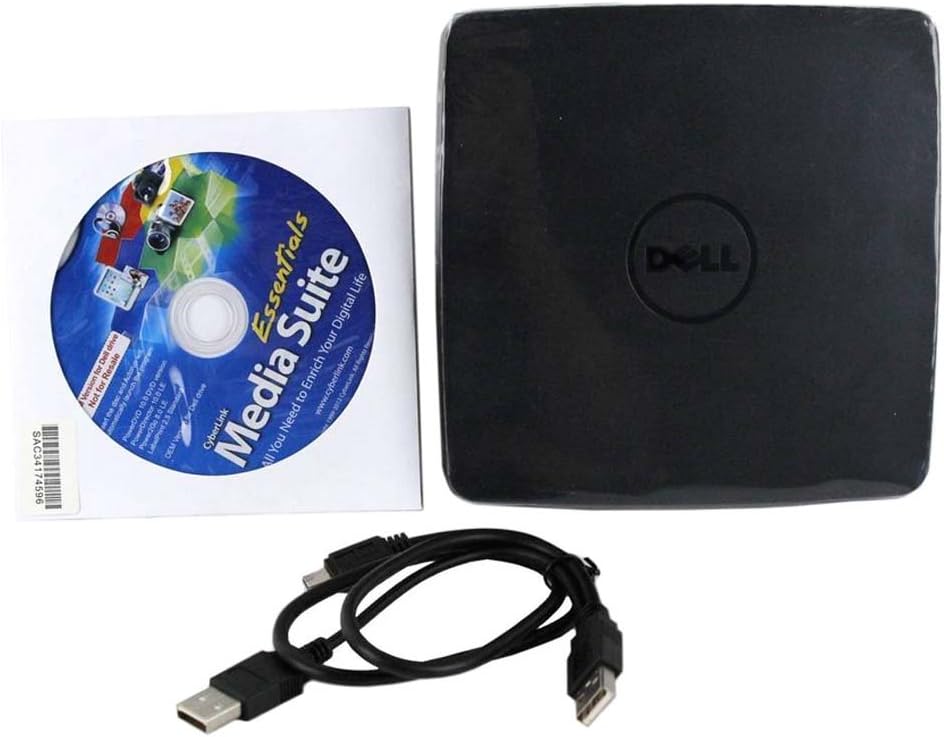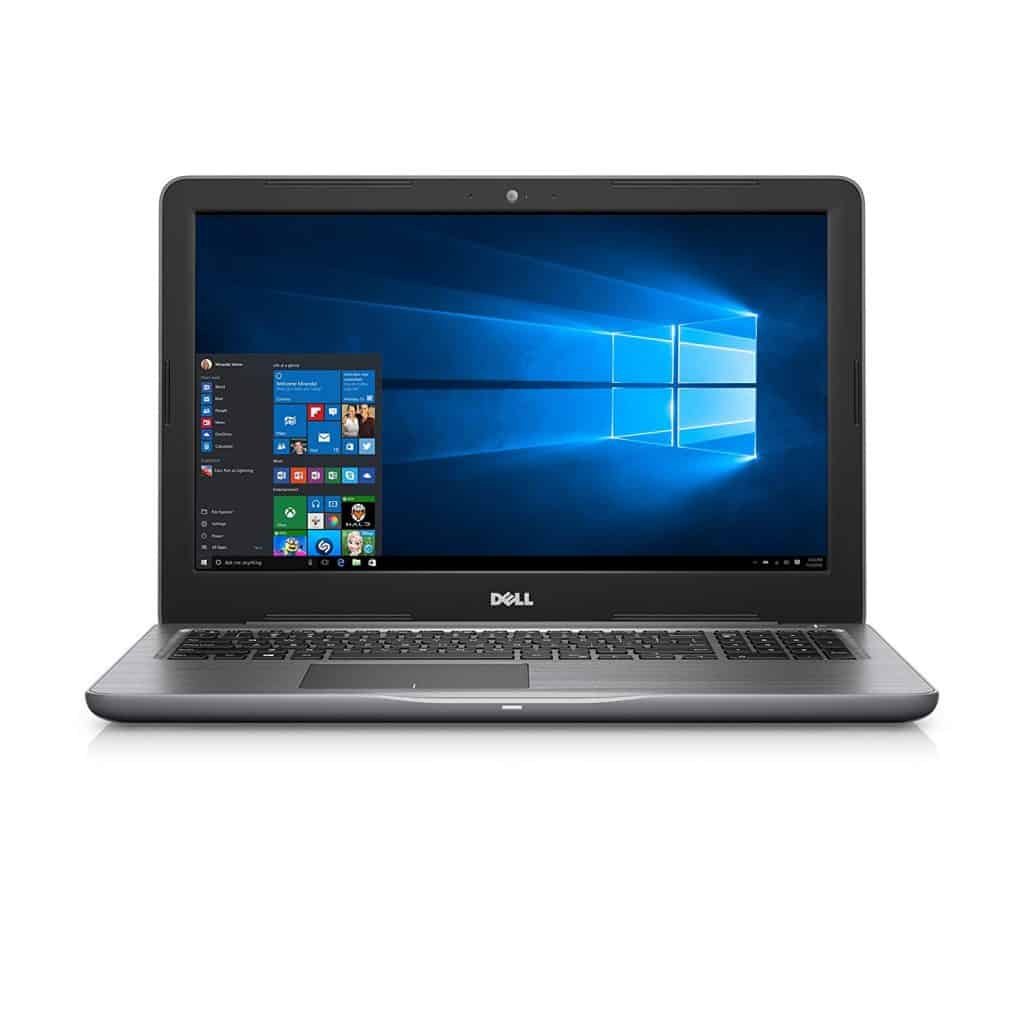Open any folder on your computer, any folder at all. Click 'Computer' found in the navigation pane on the lower left. 1 x left click on your CD/DVD rom drive. 1 x right click on the drive and select 'Eject' EDIT. 'My PC' is in windows 8.1 the equivalent to 'Computer'. Open the location and follow my previous instructions. In the computer window where the drives are listed, please locate the drive with the CD or Disc icon which indicates it is the optical drive. It could be D, E or F depending on your configuration and actual disk drives. When you found the optical drive with the CD or Disc icon, right click on it, then click on Eject.
- I have a Dell computer (Inspiron 24, 3000 series) an installed DVD player and it does not play. I have been reading a lot of reviews which are very negative and I guess I will add to their remarks. I can only assume the player is not up your standards or mine. I don't understand why you bothered to place this DVD player in this Dell desktop.
- Or maybe you will want to install a program from a compact disc. Notes on opening a cd to see its contents: You can experiment and try to open a cd drive. Put a disc in your cd drive and then go to my computer and try to open the cd to see its contents. If you open the wrong cd drive nothing will happen, just close that and open the correct one.
- As long as you insert the CD in the CD drive correctly (usually label-side up), playing a music CD is one of Windows 10 Media Player’s easiest tasks. Start by pushing the drive’s Eject button, a rarely labelled button that lives next to or on the disc drive on the front of your computer.
Your computer can play music CDs and DVDs and, if it’s powerful enough, can show films and TV programmes on disc. You can also buy new computer programs on disc or put blank discs into your computer to do things like copying photos, documents or music.
CDs and DVDs are played within optical disc drives that come as part of a computer. There are two types of these drives:
- readers – these only read from the discs
- writers (also known as recorders or burners) – these can copy data on to discs.
Many drives are reader-only, but writers are usually only available in combination with readers.
It can take a bit of detective work to figure out how to play a CD or DVD.
Follow these step-by-step instructions on how to put a CD or DVD into your computer
Step 1: First, you need to discover what sort of disc drive(s) you’ve got.

The PC above has two drives: a DVD reader at the top, and a combined DVD/CD reader/writer underneath. These are actually drawer-like trays, into which a DVD or CD is laid and then the tray is closed.
The laptop above has a combined DVD/CD reader/writer on the side of the keyboard.
All-in-one and touch-screen computers often have a drive in one side, immediately behind the screen.
It’s also possible that access to the drive is only a slot. If this is the case, as it is in Apple iMac computers and iBook laptops, just gently feed in the disc and the computer will take it.
Step 2: Now you need to find out how to open your disc drive. This is normally done with the push of a button.
In the PC (right), the ‘open’ (or ‘eject’) buttons are underneath the tray.
Dell Inspiron Dvd Player Software
In the laptop (left), the button is actually on the tray.
Press the button on your computer. If the tray is motorised, it will open completely. If not, it will open slightly and you can gently pull it open.
Step 3: Put your disc into your computer’s disc drive:
How To Open Cd Player On Dell Laptop Not Working
The tray is ‘indented’ so that the disc sits in it.
Which side of the disc is uppermost is important. The side that has writing on it should be facing up. If you have a computer with a slot drive, you should first position the disc so that the written side is facing you and then push it in gently.
Step 4: If the tray is motorised, press the button again and it will close. Don’t push it in manually – you could break it. However, if it isn’t motorised, press the tray gently until it clicks shut.
Step 5: An icon of the CD/DVD will appear on your computer desktop. At the same, you’ll see a menu asking you what you want to do with the disc.

The above menu appeared when an audio CD was put into a PC using Windows 7. If it had been a DVD or a computer program disc, a similar menu would have appeared. Once you’ve made your choice, the appropriate software will come into action to play the music, allow the film to be shown, launch the computer program or whatever.
Step 6: To eject the disc, close the software that you’ve been using with the CD/DVD. Then drag the CD/DVD icon to the ‘Recycle Bin’. This should cause the tray to open automatically if the drive is motorised so that you can remove the CD/DVD. If it’s not motorised, gently pull it open.
Don’t try to remove the CD/DVD from the tray without first getting rid of the icon from the screen – otherwise you could damage your computer.

Done!
Stephen Baird-Parker is a qualified ICT teacher.
Answer: Modern computers, especially laptops, rarely come with an optical drive, such as a CD or DVD player. So is it possible to play or burn CDs and DVDs if your computer doesn't have a CD or DVD drive?
Yes.. But you still need an optical drive. The easiest way to play or burn CD/DVD discs is to buy an external optical drive. Most optical drive peripheral devices connect via USB and are plug-and-play. That means you can simply connect the drive and use it the same you would use an internal CD/DVD player. Many external CD/DVD burners are available for under $50.
Alternatively, if you have another computer with an optical drive, you may be able to access the CD or DVD player from that system. First, you need to connect both computers to the same network (wired or wireless).

The PC above has two drives: a DVD reader at the top, and a combined DVD/CD reader/writer underneath. These are actually drawer-like trays, into which a DVD or CD is laid and then the tray is closed.
The laptop above has a combined DVD/CD reader/writer on the side of the keyboard.
All-in-one and touch-screen computers often have a drive in one side, immediately behind the screen.
It’s also possible that access to the drive is only a slot. If this is the case, as it is in Apple iMac computers and iBook laptops, just gently feed in the disc and the computer will take it.
Step 2: Now you need to find out how to open your disc drive. This is normally done with the push of a button.
In the PC (right), the ‘open’ (or ‘eject’) buttons are underneath the tray.
Dell Inspiron Dvd Player Software
In the laptop (left), the button is actually on the tray.
Press the button on your computer. If the tray is motorised, it will open completely. If not, it will open slightly and you can gently pull it open.
Step 3: Put your disc into your computer’s disc drive:
How To Open Cd Player On Dell Laptop Not Working
The tray is ‘indented’ so that the disc sits in it.
Which side of the disc is uppermost is important. The side that has writing on it should be facing up. If you have a computer with a slot drive, you should first position the disc so that the written side is facing you and then push it in gently.
Step 4: If the tray is motorised, press the button again and it will close. Don’t push it in manually – you could break it. However, if it isn’t motorised, press the tray gently until it clicks shut.
Step 5: An icon of the CD/DVD will appear on your computer desktop. At the same, you’ll see a menu asking you what you want to do with the disc.
The above menu appeared when an audio CD was put into a PC using Windows 7. If it had been a DVD or a computer program disc, a similar menu would have appeared. Once you’ve made your choice, the appropriate software will come into action to play the music, allow the film to be shown, launch the computer program or whatever.
Step 6: To eject the disc, close the software that you’ve been using with the CD/DVD. Then drag the CD/DVD icon to the ‘Recycle Bin’. This should cause the tray to open automatically if the drive is motorised so that you can remove the CD/DVD. If it’s not motorised, gently pull it open.
Don’t try to remove the CD/DVD from the tray without first getting rid of the icon from the screen – otherwise you could damage your computer.
Done!
Stephen Baird-Parker is a qualified ICT teacher.
Answer: Modern computers, especially laptops, rarely come with an optical drive, such as a CD or DVD player. So is it possible to play or burn CDs and DVDs if your computer doesn't have a CD or DVD drive?
Yes.. But you still need an optical drive. The easiest way to play or burn CD/DVD discs is to buy an external optical drive. Most optical drive peripheral devices connect via USB and are plug-and-play. That means you can simply connect the drive and use it the same you would use an internal CD/DVD player. Many external CD/DVD burners are available for under $50.
Alternatively, if you have another computer with an optical drive, you may be able to access the CD or DVD player from that system. First, you need to connect both computers to the same network (wired or wireless).
In Windows, you can use the Network File and Folder Sharing or feature to share an optical drive with other systems on the network. Simply open the 'This PC' window in Windows Explorer. Then right-click the CD/DVD drive icon and select Give access to → Advanced sharing..'. Finally, select the appropriate network or use the 'Advanced Sharing' option to choose what users can access the drive.
In macOS, open System Preferences and choose the Sharing option. Then check the box next to 'DVD or CD Sharing.' This will allow other Macs connected to the same network to access the optical drive. You can open, play, and burn CDs and DVDs from other systems just like you can from the computer with the physical drive.
